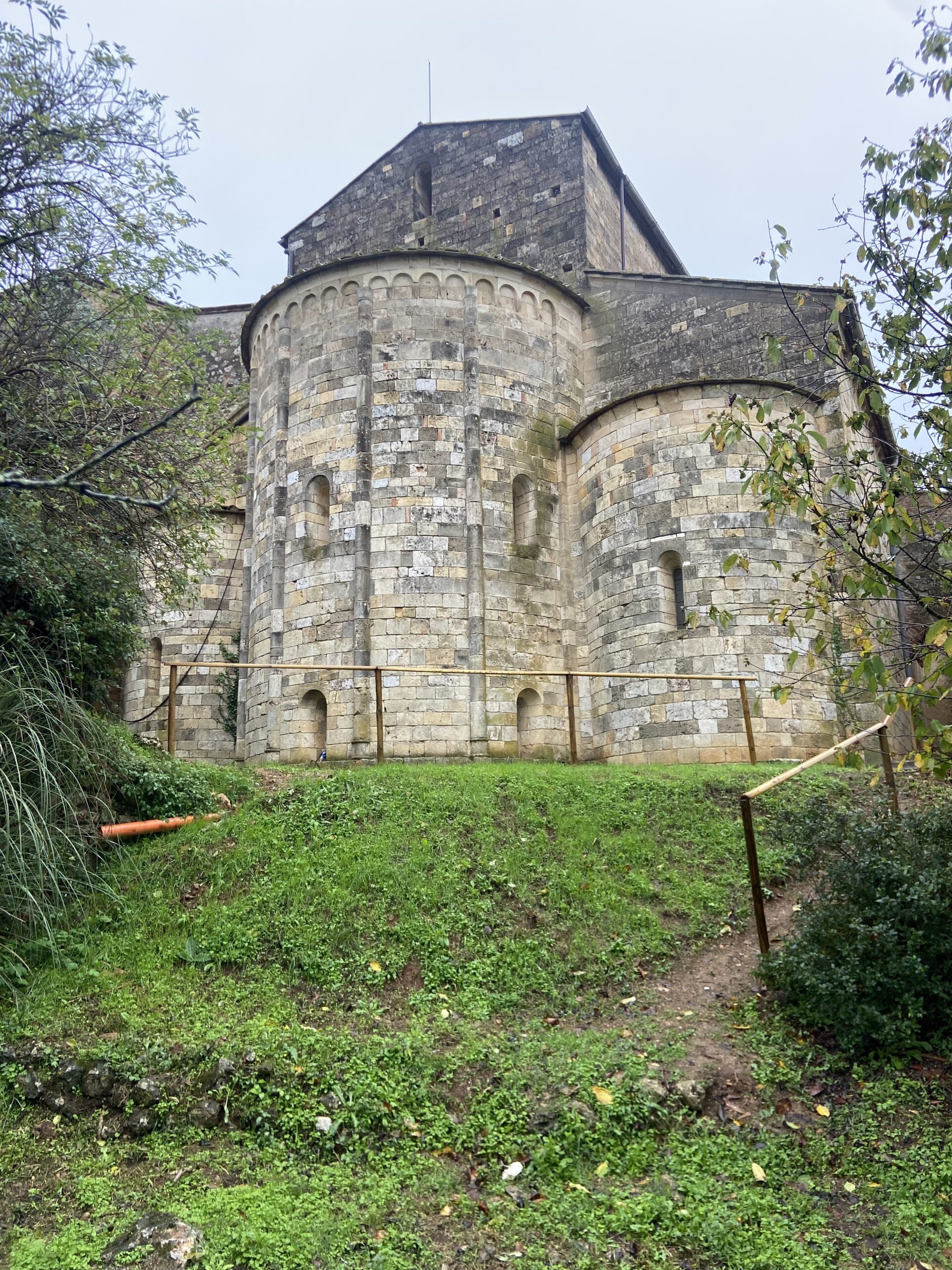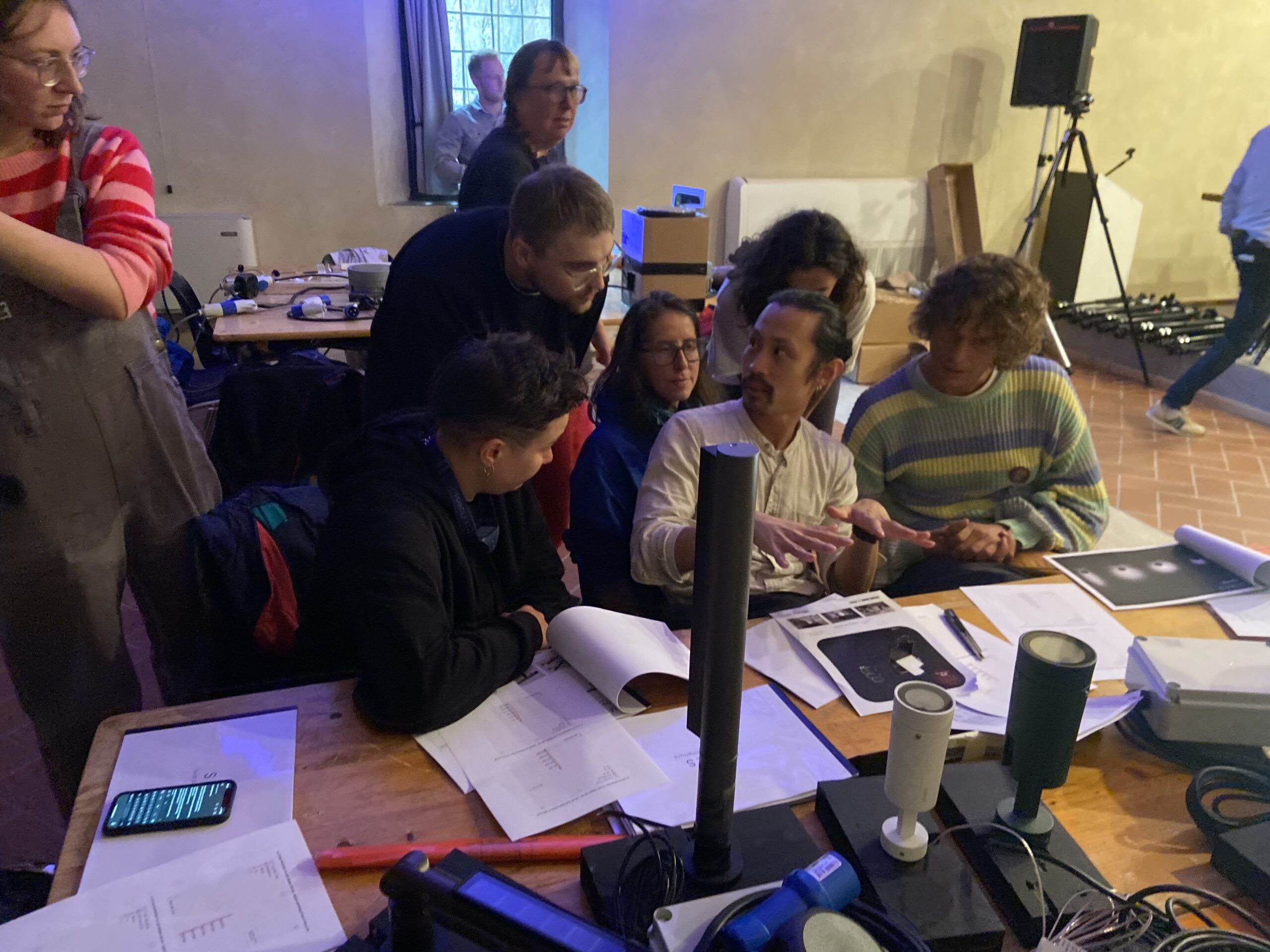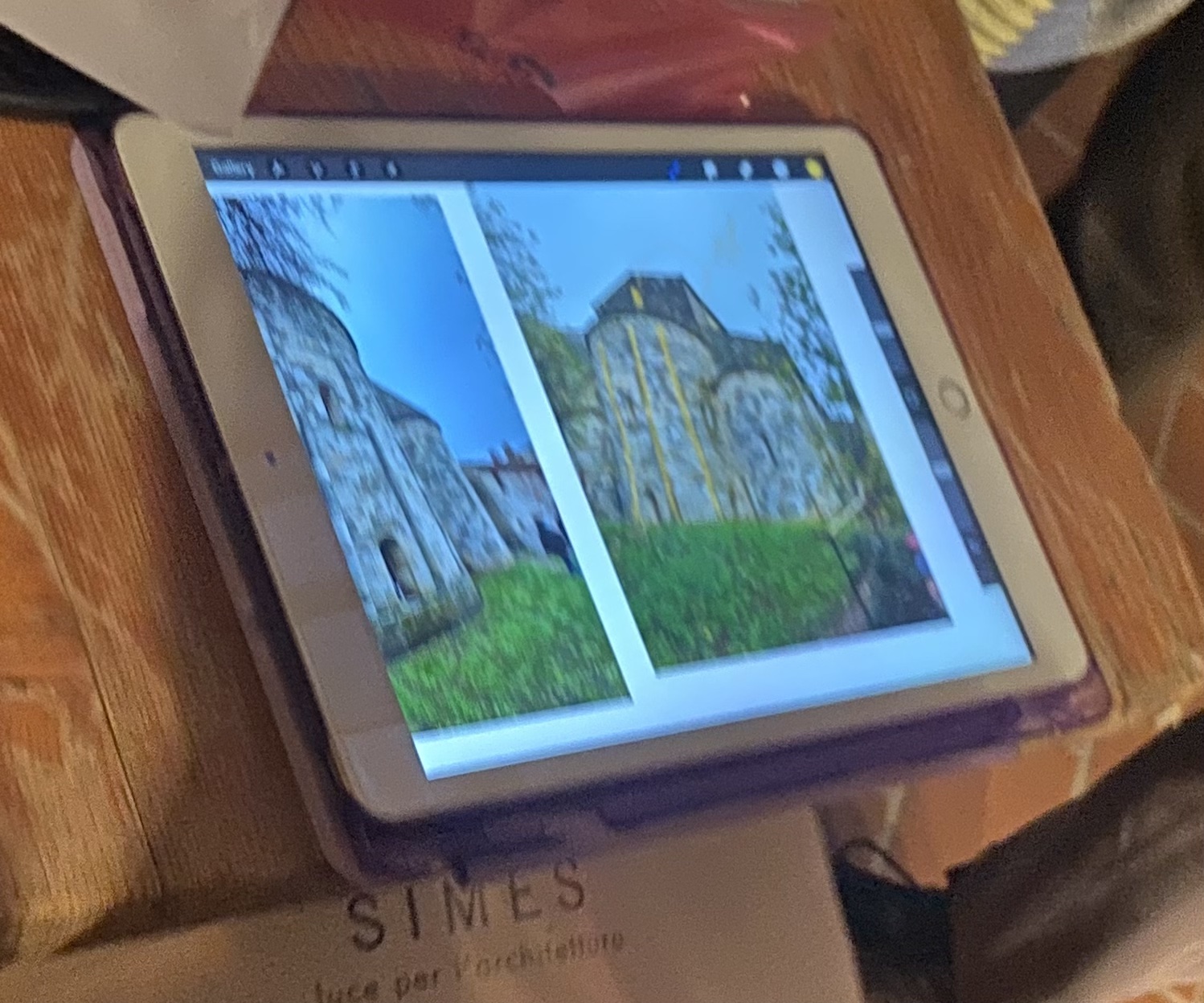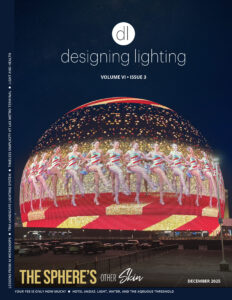Attending the Going Dark workshop in Tuscany has been a humbling experience for me as the editor of designing lighting (dl) magazine. Stepping out of my usual role, I found myself deeply involved in lighting design, installation, and commissioning. Rubbing shoulders with designers from around the world was both exciting and nerve-racking.
This event, hosted by Traverso-Vighy and Light Collective, was an extraordinary opportunity to collaborate on lighting heritage spaces while preserving darkness and protecting the night sky.

Going Dark 2024, 1,200 year-old monastery in daytime
A Unique Setting
The setting was remarkable. We stayed in dormitory-style accommodations at a 1,200 year-old monastery, which added to the authenticity of the experience. It was enough to convince Mrs. Reid to skip the trip, but I braved the rain and joined the team. Yes, it was pouring, but we pushed forward.
Our Task: Lighting a 1,200-Year-Old Monastery
After various manufacturers, including Thorn, Simes, L&L Luce&Light, and WE-EF, demonstrated their products, we were divided into teams. My group’s assignment was lighting the apse of the monastery in Abbadia a Isola. It was both challenging and enlightening.

Going Dark 2024 group discussion
We partnered with Simes, a company that collaborates with Sistemalux in the U.S. Stepping out of my comfort zone, I experimented with RGBWW lighting. For the first time ever, I worked with filters—yes, filters, not gels—to transform asymmetrical light into linear beams.
Challenges and Creative Solutions
One of the first challenges we faced was lighting the top window of the apse. The designers debated who the audience was and where the most views would come from. The consensus? We were designing primarily for drivers on the road. We wanted to emphasize the upper part of the building, making it visible to drivers passing by. But the logistics were tough. In a big city, you’d use a scissor lift to install a luminaire inside for a beautiful lantern effect. Here, on the narrow, winding roads of this remote village, a lift wasn’t practical. Instead, we used a projector from the ground to highlight the window. It wasn’t glamorous, but it was realistic.
This experience taught me an important lesson: practical, cost-effective designs often win out over the more ambitious and glamorous ones.
Where Should We Aim the Light?
The second challenge was figuring out where to aim the light. The debate continued over whether to focus on the middle of the structure or the top. Personally, I liked the idea of highlighting the top due to the architectural details. But there was concern that the higher we went, the more light pollution we would create. As I write this, the discussion is still ongoing.

Going Dark 2024: Hand sketched designed

Going Dark 2024: iPad sketch
Sketching the Plan
We began by reviewing the project outdoors in the pouring rain. Afterward, we regrouped with the Simes team to strategize. One designer sketched his plan with colored pencils on paper before transferring it to his iPhone. Another designer started her sketch directly on an iPad. Both approaches brought the team to a consensus: we would light the three columns in a linear pattern, creating a unified and visually striking effect.
Digital Tools and Final Installation
After the rain stopped, we went outside to install the fixtures and aim the lights. This is where I developed a deep appreciation for digital controls. One of our designers used his phone to show us ten different colors for the windows. I was amazed at how easily the colors could be changed. For instance, I had originally thought a blue-lit window would look terrible, but after seeing it in real life with the push of a button, I didn’t mind it so much.
Lessons Learned
This project has been eye-opening for me. Being involved in the design process and facing real-world constraints has made me appreciate the daily challenges lighting designers encounter. I’ve learned that creativity isn’t just about bold ideas—it’s about finding smart, realistic solutions that respect both the space and the environment.
An Unforgettable Adventure
As I stand here, rain-soaked and working alongside some of the brightest minds in lighting, I realize how much I still have to learn. That’s exactly why I’m here—to get out of my comfort zone, learn something new, and bring those lessons back to the industry.
Day 1 of Going Dark has been an unforgettable adventure, and I’m eager to apply what I’ve learned to the pages of designing lighting (dl).
I can’t wait until tomorrow!




